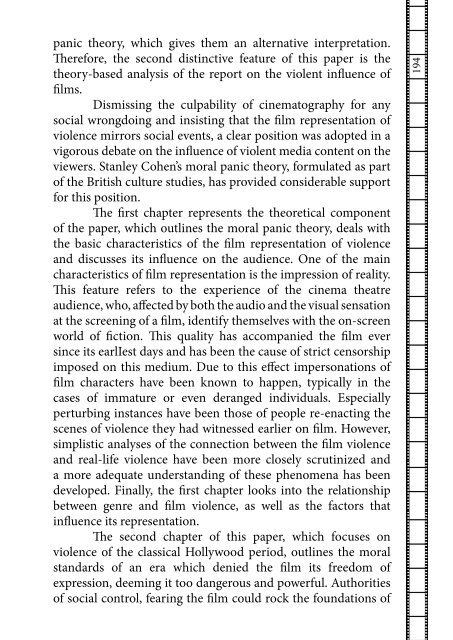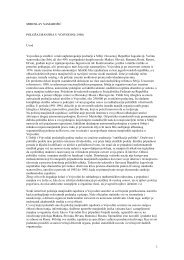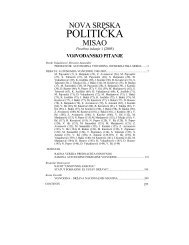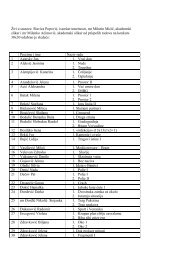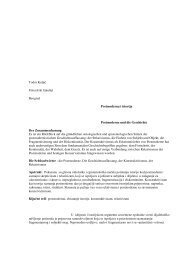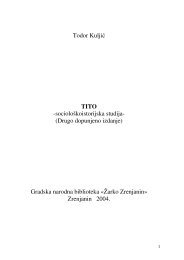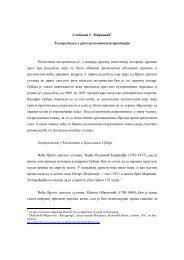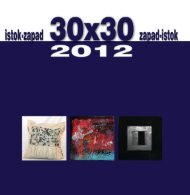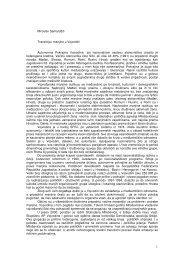You also want an ePaper? Increase the reach of your titles
YUMPU automatically turns print PDFs into web optimized ePapers that Google loves.
panic theory, which gives them an alternative interpretation.<br />
Therefore, the second distinctive feature of this paper is the<br />
theory-based analysis of the report on the violent influence of<br />
films.<br />
Dismissing the culpability of cinematography for any<br />
social wrongdoing and insisting that the film representation of<br />
violence mirrors social events, a clear position was adopted in a<br />
vigorous debate on the influence of violent media content on the<br />
viewers. Stanley Cohen’s moral panic theory, formulated as part<br />
of the British culture studies, has provided considerable support<br />
for this position.<br />
The first chapter represents the theoretical component<br />
of the paper, which outlines the moral panic theory, deals with<br />
the basic characteristics of the film representation of violence<br />
and discusses its influence on the audience. One of the main<br />
characteristics of film representation is the impression of reality.<br />
This feature refers to the experience of the cinema theatre<br />
audience, who, affected by both the audio and the visual sensation<br />
at the screening of a film, identify themselves with the on-screen<br />
world of fiction. This quality has accompanied the film ever<br />
since its earlIest days and has been the cause of strict censorship<br />
imposed on this medium. Due to this effect impersonations of<br />
film characters have been known to happen, typically in the<br />
cases of immature or even deranged individuals. Especially<br />
perturbing instances have been those of people re-enacting the<br />
scenes of violence they had witnessed earlier on film. However,<br />
simplistic analyses of the connection between the film violence<br />
and real-life violence have been more closely scrutinized and<br />
a more adequate understanding of these phenomena has been<br />
developed. Finally, the first chapter looks into the relationship<br />
between genre and film violence, as well as the factors that<br />
influence its representation.<br />
The second chapter of this paper, which focuses on<br />
violence of the classical Hollywood period, outlines the moral<br />
standards of an era which denied the film its freedom of<br />
expression, deeming it too dangerous and powerful. Authorities<br />
of social control, fearing the film could rock the foundations of<br />
194


